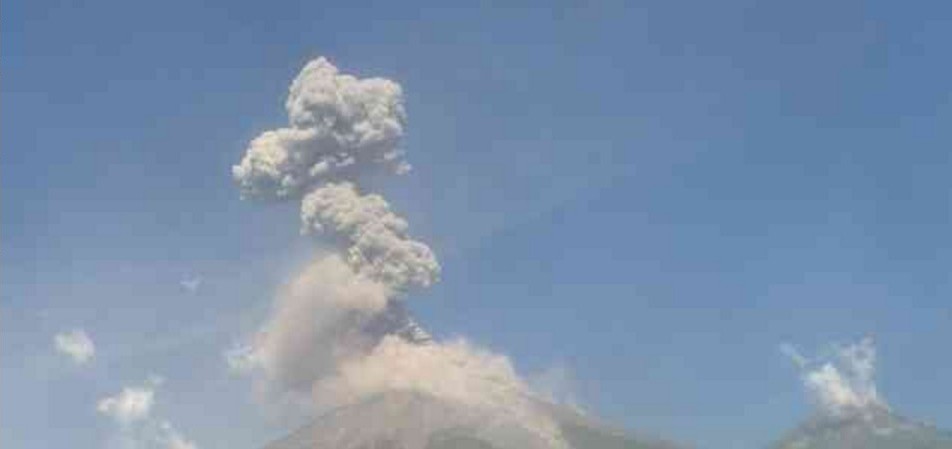Increased activity at Fuego, ash up to 5.8 km (19 000 feet) a.s.l.

The activity at Guatemalan Fuego volcano continues with constant moderate explosions ejecting columns of ash and smoke up to 5 km (16 404 feet) above sea level and traveling more than 25 km to the NE, N, NE and E. Ashfall is reported in areas near Alotenango and San Vicente Pacaya.
Explosive ejection of incandescent fragments of new viscous lava is reaching up to 300 m (984 feet) and falling up to 500 m (1 640 feet) from the crater. The eruptive behavior is producing constant moderate to strong rumble.
This activity is feeding two lava flows, one towards the Barranca Santa Teresa nad the second towards Las Lajas, INSIVUMEH reported in a special bulletin released February 25, 2017.
There is a possibility that pyroclastic flows are generated, so it is not advised to stay in or near the main canyons, the agency warned.
At 09:45 UTC today, the Washington VAAC reported satellite imagery showed one volcanic ash cloud up to 5.8 km (19 000 feet) a.s.l., extending 130 km (80 miles) NE of the summit, and another 1.5 km (5 000 feet) extending 139 km (86 miles) to the SSW.
Geological summary
Volcán Fuego, one of Central America's most active volcanoes, is one of three large stratovolcanoes overlooking Guatemala's former capital, Antigua. The scarp of an older edifice, Meseta, lies between 3 763 m (12 345.8 feet high Fuego and its twin volcano to the north, Acatenango. Construction of Meseta dates back to about 230 000 years and continued until the late Pleistocene or early Holocene. Collapse of Meseta may have produced the massive Escuintla debris-avalanche deposit, which extends about 50 km (31 miles) onto the Pacific coastal plain.
Growth of the modern Fuego volcano followed, continuing the southward migration of volcanism that began at Acatenango. In contrast to the mostly andesitic Acatenango, eruptions at Fuego have become more mafic with time, and most historical activity has produced basaltic rocks. Frequent vigorous historical eruptions have been recorded since the onset of the Spanish era in 1524, and have produced major ashfalls, along with occasional pyroclastic flows and lava flows. (GVP)
Featured image: Eruption at Fuego volcano, Guatemala on February 1, 2017. Credit: INSIVUMEH, MTU

Commenting rules and guidelines
We value the thoughts and opinions of our readers and welcome healthy discussions on our website. In order to maintain a respectful and positive community, we ask that all commenters follow these rules.